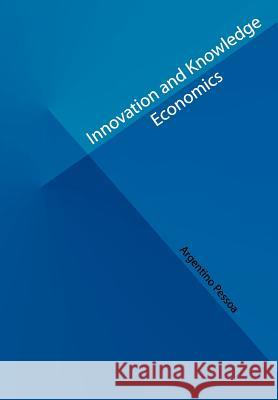Innovation and Knowledge Economics » książka
Innovation and Knowledge Economics
ISBN-13: 9781475088069 / Angielski / Miękka / 2012 / 194 str.
Innovation & Knowledge Economics examines the chief perspectives that have emerged in the last decades about the role of innovation in the economy and in society. Its main aim is to provide readers with the needed instruments to answer questions such us: what is innovation? How does innovation contribute to the different economies' performance? What is the source of innovative capability occurring in different sectors, regions and countries? How does research and science affect innovation? What is the policy role in supporting innovation? In order to answer the above questions in a systematic way, the book is organized in seven chapters. Chapter one deals with definitions and measurement problems associated to the innovation process. Hence, after distinguishing between invention, and innovation and diffusion, two topics are presented: the Freeman taxonomy of technical change and the modeling of the innovation process. The remainder of the chapter is totally dedicated to the STI (Science, Technology and Innovation) measurement. The most recognized STI indicators are presented and their usefulness and limitations in international comparisons are underlined. The chapter two relates innovation with economic dynamics. It begins by presenting the similarities of innovation, economic growth and structural change. Then the chapter proceeds to analyze the seminal approach of Schumpeter concerning innovation, economic development and business cycles. Next, the concept of techno-economic paradigm is introduced and some explanations about the relationship between innovation and long cycles are provided for. The chapter ends by presenting the technology gap model of Jan Fagerberg. Chapter three is dedicated to the economic foundations of innovation and diffusion. Beginning with the evolutionary approach to the innovation process, emphasis is placed on the dissimilarity between this approach and the mainstream theory. Next, two other controversies are introduced: the technology-push vs. demand-pull debate and the induced technological change argument. The remainder of the chapter deals with the technology diffusion and with the explanations for the pattern that technology adoption usually presents: the S curve. Chapter four deals with the sectoral patterns of innovation. Appropriability, technological opportunity and cumulativeness are some concepts introduced and the usefulness of these is demonstrated with the definition of innovation patterns and technological regimes. Next, the Pavitt's taxonomy is presented, not only in the static version but also dynamically, as a contribution to a successful technology policy of development in late industrialized countries. Chapter five explains the territorial foundations of innovation. Beginning with the association of the territory to the production of external economies for firms and industries, the chapter proceeds with a reflection about the relevance of some concepts associated to the territorial location of economic activities. Proximity, tacit knowledge, network, innovative milieu and industrial district are some such concepts which are presented and explained. A reflection about the relationship between knowledge base and competitiveness and the Richard Florida's view about creative cities conclude the chapter. Innovation systems (IS) are the focus of the chapter six. Beginning with the concept and functions of the IS and by distinguishing several IS with a particular emphasis on the difference between NIS and RIS, the creative cities and knowledge base perspectives are retaken and discussed in the light of the RIS concept. A taxonomy of RIS closes the chapter. Finally, the book ends with a chapter focused on a preliminary approach to the innovation policy. Together with the presentation of several policy instruments and the foundations of innovation policy, some other issues are taken in hand such as the appropriability problem and the intellectual property problematic.
Zawartość książki może nie spełniać oczekiwań – reklamacje nie obejmują treści, która mogła nie być redakcyjnie ani merytorycznie opracowana.











